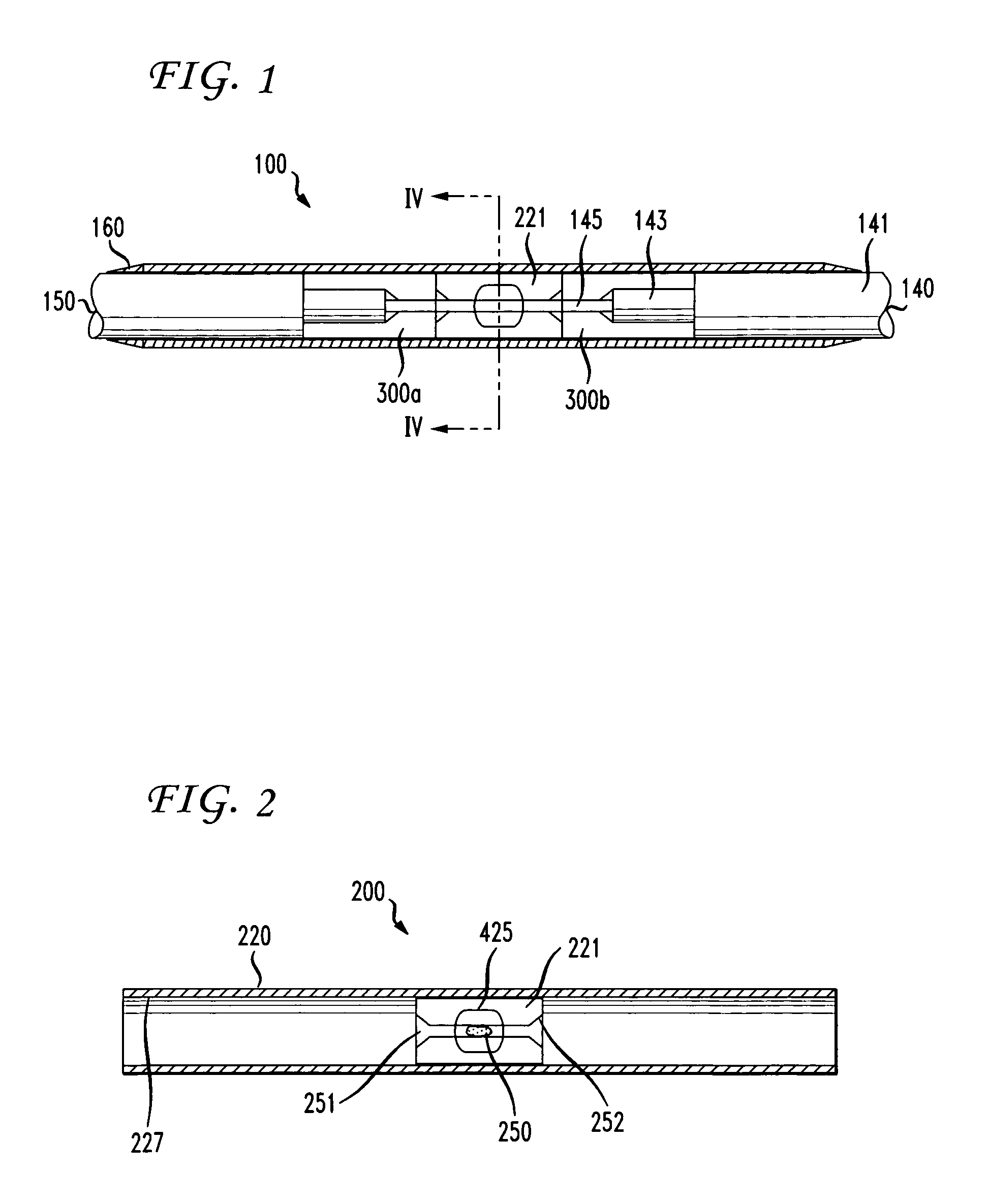Fiber optic splice
a fiber optic splicing and fiber optic technology, applied in the field of splicing optical fibers, can solve the problems of insufficient avionics applications for failure of standard fiber optic splicing technology, and difficulty in pulling and replacing complete runs of fiber cables within an aircraft, and achieve the effect of maximum signal strength
- Summary
- Abstract
- Description
- Claims
- Application Information
AI Technical Summary
Benefits of technology
Problems solved by technology
Method used
Image
Examples
Embodiment Construction
[0064]The present invention overcomes the above-described problems with several methods and apparatuses relating to a novel multimode mechanical splice. A splice assembly 100 according to one embodiment of the invention with optical fiber cables 140, 150 in place is shown in FIG. 1. As used herein, the term “optical fiber cable” refers to an optical fiber core together with the protective and isolating layers surrounding the fiber. A typical optical fiber cable 140, shown separately in FIG. 7, includes an optical fiber core 145, a hermetic coating (not shown) of polyimide applied directly to the optical fiber core, an inner jacket layer 143 typically comprising a modified ETFE (ethylene-tetrafluoroethylene) fluoropolymer such as Tefzel® manufactured by DuPont, an aramid fiber mesh strength member (fabricated, for example, from Dupont Kevlar® fibers) 142 and an outer jacket 141.
[0065]Returning to FIG. 1, the splice assembly 100 is shown joining the ends of two optical fiber cables 14...
PUM
 Login to View More
Login to View More Abstract
Description
Claims
Application Information
 Login to View More
Login to View More - R&D
- Intellectual Property
- Life Sciences
- Materials
- Tech Scout
- Unparalleled Data Quality
- Higher Quality Content
- 60% Fewer Hallucinations
Browse by: Latest US Patents, China's latest patents, Technical Efficacy Thesaurus, Application Domain, Technology Topic, Popular Technical Reports.
© 2025 PatSnap. All rights reserved.Legal|Privacy policy|Modern Slavery Act Transparency Statement|Sitemap|About US| Contact US: help@patsnap.com



